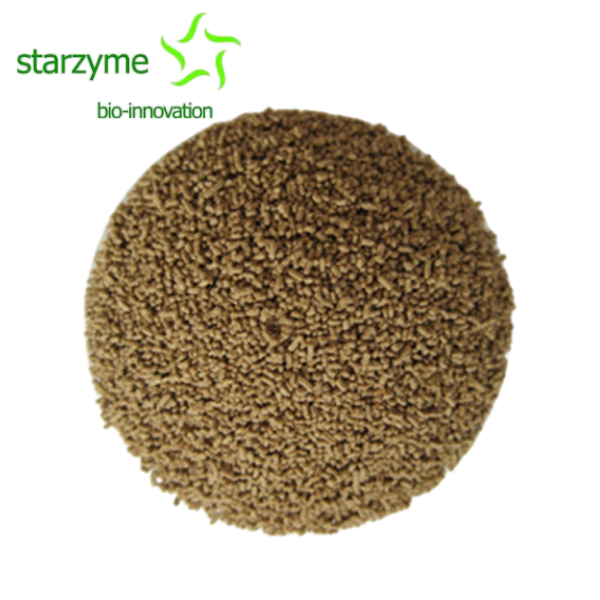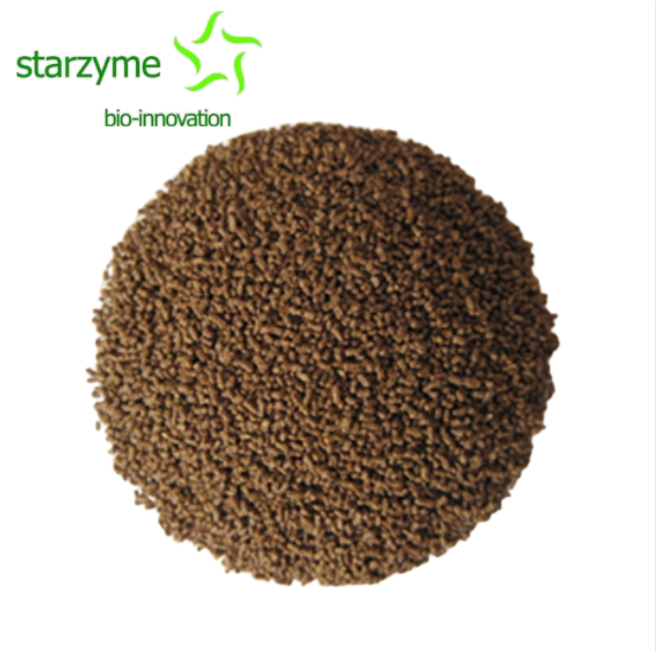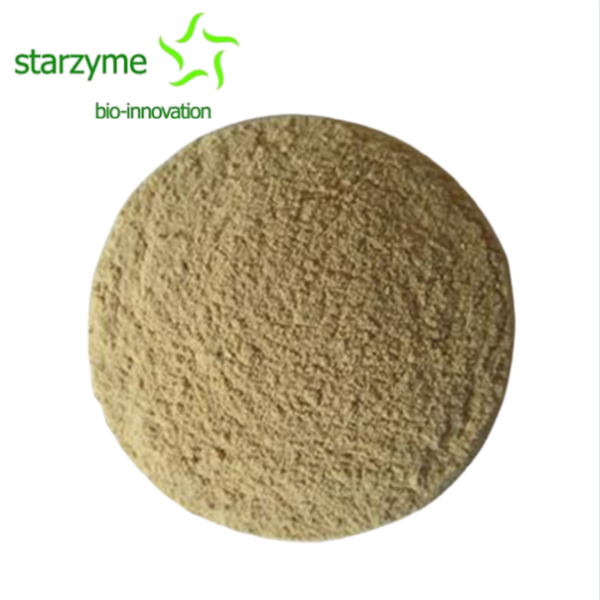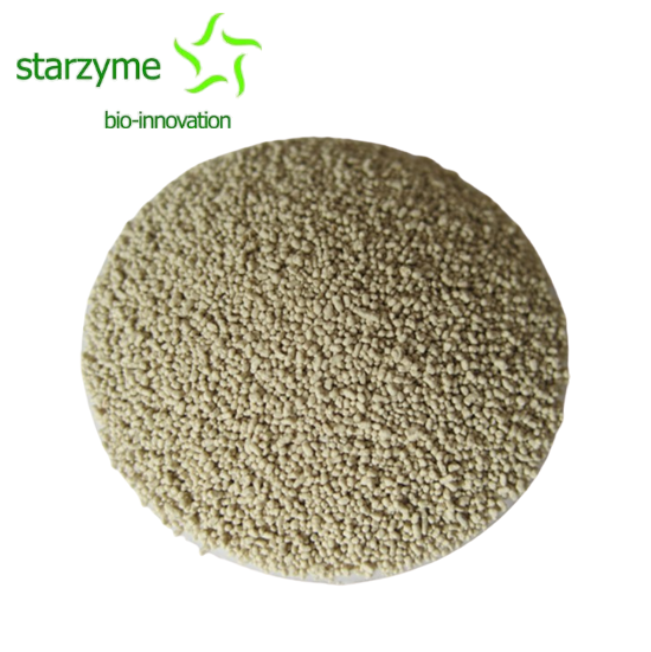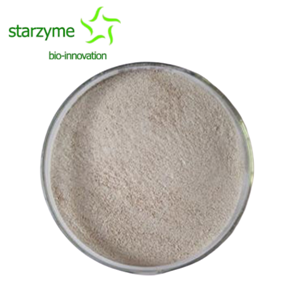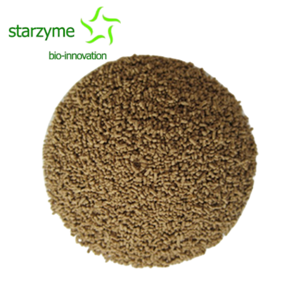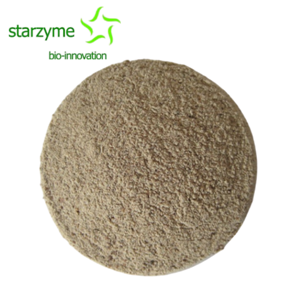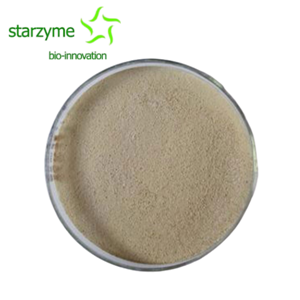Enzyme For Freshwater Fish

- Starzyme
- China LiaoNing
- Within Two weeks afterreceivedthe order
- 150 Tons Permonth
1. The dietary feeds of aquatic animals, especially the omnivorous fish, contain large amount of oil seed meal with high contents of xylan, cellulose and protein. The compound enzyme specialized for freshwater fish mainly contains Arabian xylanase, β-glucanase, mannanase, pectinase, cellulase, protease, and amylase.
2. The content and the ratio of each single enzyme have been designed based on the digestive physiological features and dietary characteristics of fish.
3. Each single enzyme has been tested for high temperature resistance to ensure its stability in pelleting at high temperature and during long period of storage.
4. The enzyme activity can be maintained up to 90% when stored at room temperature for 6 months.
The digestive features of fish
1. The digestive organs of fish are simple and short.
2. The digestive glands of fish are not fully developed and the activities of digestive enzymes are lower due to low body temperature.
3. The species and the amount of digestive bacteria are less.
Product features:
1. The dietary feeds of aquatic animals, especially the omnivorous fish, contain large amount of oil seed meal with high contents of xylan, cellulose and protein. The compound enzyme specialized for freshwater fish mainly contains Arabian xylanase, β-glucanase, mannanase, pectinase, cellulase, protease, and amylase.
2. The content and the ratio of each single enzyme have been designed based on the digestive physiological features and dietary characteristics of fish.
3. Each single enzyme has been tested for high temperature resistance to ensure its stability in pelleting at high temperature and during long period of storage.
4. Excellent post-processing, pelleting and coating techniques ensured the stability of the enzymatic activity during storage, transportation and usage.
5. This product is a pure biological preparation with no drug residues and no drug resistance.
Main functions:
1. The compound enzyme for fish can complement the endogenous digestive enzymes and promote the digestion and absorption of nutrients such as protein and starch.
2. The compound enzyme can decrease the anti-nutritional factors in aquatic feeds, reduce chyme viscosity in the digestive tract, and thus increase the absorption of nutrients.
3. The compound enzyme for fish is rich in unknown growth promoting factors which can promote the growth.
4. The compound enzyme for fish can enhance the growth uniformity and disease resistance, and thus reduce the incidence of diseases and enhance the livability.
5. The compound enzyme for fish can improve the quality and flavor of fish meat and lower down the bait feeding coefficient.
6. The compound enzyme for fish can also reduce the excretion of fecal phosphorus and the formation of eutrophic body of water.
The action mechanism of compound enzyme in fish feed
1. Destroy the plant cell wall, make the enzyme fully contact the substrate, and improve the digestion and absorption of nutrients. Commonly used vegetable fish feed ingredients contain a large amount of non-starch polysaccharides (such as arabinoxy).
Sugar, β-glucan, mannan, cellulose, pectin, etc.), which are components of plant cell walls. Fish itself cannot secrete enzymes that degrade non-starch polysaccharides, resulting in equivalent
The proportion of nutrients is excreted as feces with non-starch polysaccharides. The addition of non-starch polysaccharidase can destroy the plant cell wall, expose the nutrients in the cell, and be contacted and digested by amylase and protease.
Improve the absorption and utilization of nutrients, mannanase can also significantly change blood sugar levels and promote sugar metabolism.
2. Hydrolyze the non-starch polysaccharides to reduce the viscosity of the contents of the digestive tract. The non-starch polysaccharides in the plant feed can be partially dissolved after entering the fish digestive tract to produce viscosity and make the contents of the digestive tract
The viscosity increases, forming a physical barrier to endogenous enzymes, thereby affecting the digestion and absorption of nutrients. Enzymatic hydrolysis of non-starch polysaccharides in diets can degrade these non-starch polysaccharide macromolecules into monosaccharides.
And oligosaccharides, reduce the viscosity of the contents of the digestive tract, increase the contact area between endogenous enzymes and nutrients, and improve the digestion and utilization of nutrients.
3. Eliminate anti-nutritional factors and change the distribution of flora in the digestive tract. Vegetable protein feed materials such as soybean meal contain anti-nutritional factors such as protease inhibitors and lectins, which can be combined
Endogenous protease and inactivate it, thereby reducing the digestibility of feed protein, and changing the distribution of the intestinal flora, causing a large number of harmful bacteria to multiply and affecting the health of fish. Add protease
Enzymes and other enzymes can eliminate these anti-nutritional factors, improve the digestion and absorption of protein, and improve the health of fish.
4. Supplement the lack of endogenous enzymes and improve the effect of the animal's own intestinal enzymes. Due to the digestive physiological characteristics of fish (the digestive organs are simple and short; the digestive glands are underdeveloped and the digestive enzyme activity is low;
The short residence time of food in the digestive tract is determined by fish's low digestibility of feed protein and starch, resulting in waste of feed nutrients. Adding protease, amylase, etc. to fish feed can supplement
To fill the deficiency of these endogenous enzymes, increase the digestion and absorption of protein and starch, increase the growth rate of fish, and reduce the feed coefficient.

After the plant cell wall is treated with non-starch polysaccharidase, the nutrients in it are fully released (pictured)
Applications :
The compound enzyme is suitable for all species of freshwater fish.
1. Concentrate powdered : It is suitable for compound feed and concentrate feed and should be added at 100-150 g/ton of feed.
Package: 20 kg/bag.
2. Concentrate pelleted: It is suitable for supper concentrate feed and pelleted feed and should be added at 100-150 g/ton of feed.
Package: 25 kg/bag.
3. Concentrate coated: It is suitable for pelleted feed and premix and should be added at 100-150 g/ton of feed.
Package: 25 kg/bag.
Storage:
Store in dry and cool (below 25°C) area with ventilation. During transportation, keep away from any toxins or harmful materials. Avoid direct exposure to strong sunlight, rain and moisture. The enzymes will lose activity at high temperature or under strong sunlight. The enzyme activity can be maintained up to 90% when stored at room temperature for 6 months.

Analysis on the current pain points of the industry
1. False mark of enzyme activity
The product is marked with 100,000 enzyme activities, and the actual enzyme activity is 60,000, resulting in incomplete hydrolysis and indirectly increasing the cost of enzymes.
2. Product is unstable
Lack of enzyme protection technology and quality control, unstable enzyme activity, and differences in product specifications for each batch, resulting in product quality fluctuations.
3. Long production cycle
No enzymatic hydrolysis experience and enzyme compounding technology increase labor cost and R&D cycle, which indirectly affects the production schedule.
For us, our major is to solve these pain points
1. The enzyme activity can be customized, providing different enzyme activity products and solutions
2. Stable enzyme activity, unique enzyme activity protection technology to reduce fluctuations in production quality
3. Enzyme activity is not false, strict quality control links, third-party testing to reduce enzyme costs
Quality control strength
6 key control point inspections, escorting the whole process of quality, using extraction, membrane separation, vacuum freeze-drying, spray drying and enzyme activity protection technologies to produce products that fully meet the requirements of global customers.
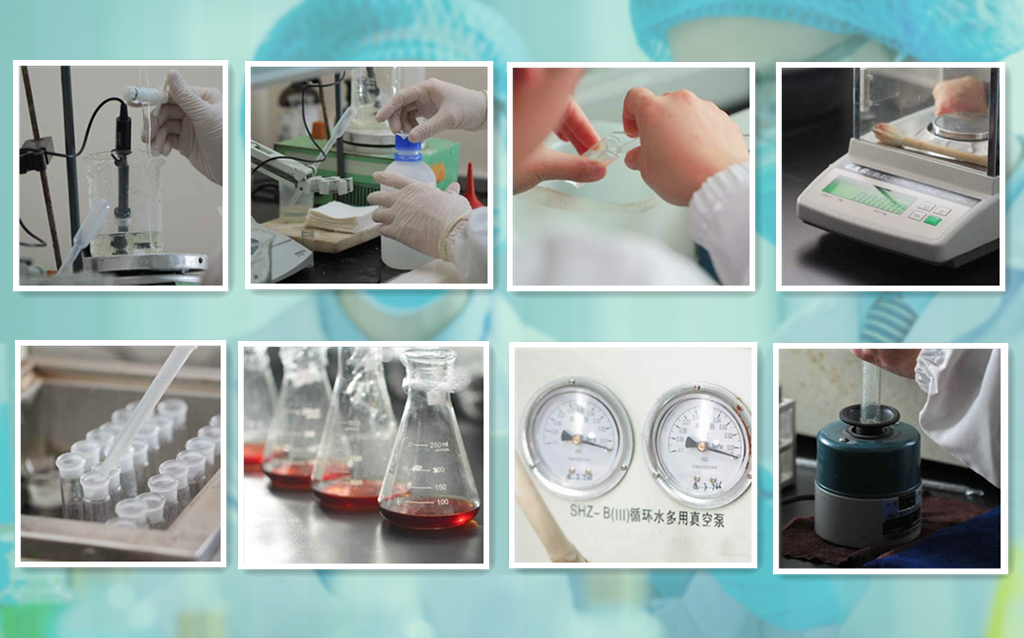
Production capacity
Eight automatic primary fermentation cylinders (60 m³),
2 pure culture tanks (10 m³), 2 pure culture tanks (5 m³),
4 pure culture tank (4 m³), 2 pure culture tanks (1 m³),
4 pure culture tanks (0.3 m³), 1 large air compressors,
1 spray/drying tower (1 ton/h),
4 air drying and fluidized bed drying equipment
1 production line of ultra concentrate liquid enzyme.
The annual production capacity of the Starzyme is more than 20,000 tons of liquid, powd
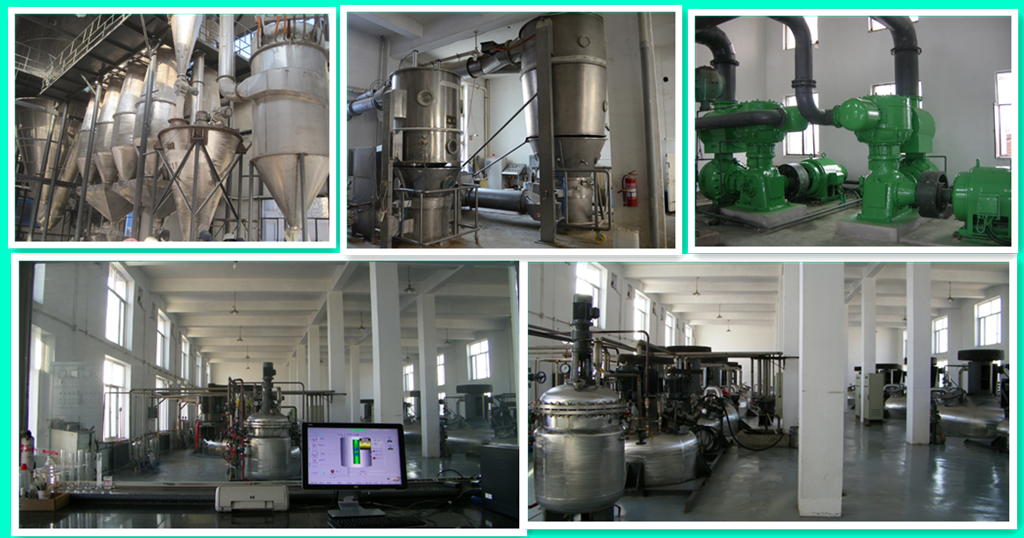
Raw material grade single enzyme varieties that have been mass produced:
Xylanase (400000U/g) Cellulase (5000U/g)
β-Glucanase (30000U/g) Mannanase (50000U/g)
Phytase (100000U/g) High temperature resistant phytase (50000U/g)
Pectinase (30000U/g) Amylase (5000U/g)
Lipase (50000U/g) Acid Protease (50000U/g)
Neutral protease (100000U/g) alkaline protease (200000U/g)
Saccharification enzyme (300000U/g) Glucose oxidase (3000U/g)
High-end micro-ecological preparations that have been mass produced:
Bacillus subtilis (3×1011 CFU/g) Bacillus licheniformis (2×1011 CFU/g)
Bacillus coagulans (5×1010 CFU/g) Lactobacillus acidophilus (1×1010 CFU/g)
Lactobacillus plantarum (1×1010 CFU/g) Yeast (2×1010 CFU/g)
Enterococcus faecalis (1×1011 CFU/g) Clostridium butyrate (1.6×109 CFU/g)
Micro-ecological preparation for high-end organic fertilizer
Bacillus subtilis (1×1011 CFU/g)
Bacillus amyloliquefaciens (1×1011 CFU/g)
Bacillus coagulans (5×1010 CFU/g)
Enzyme preparation for alcohol and liquor
Saccharification enzyme: 200,000U/g
Thank you for your browsing, as a professional manufacturer of enzyme preparations and micro-ecological preparations, we are also very willing to help you . If you want to know the targeted solution, please leave a message in the message window below, we will assign a professional product consultant to contact you.

